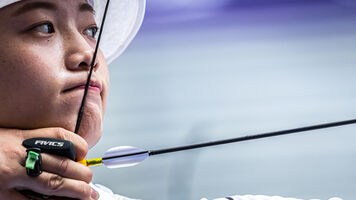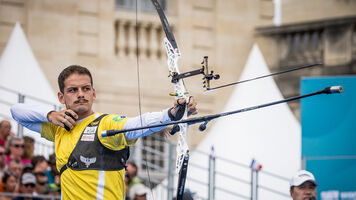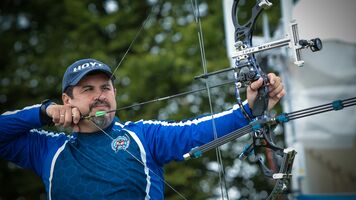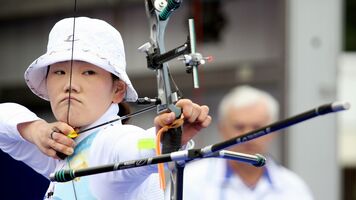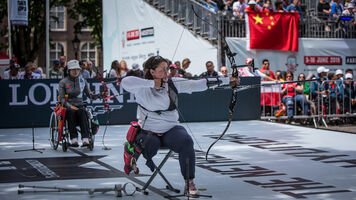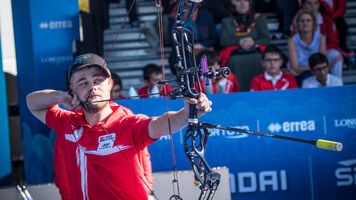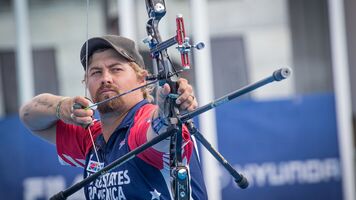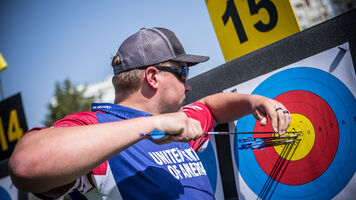Dellenbach’s top three tips for shooting well indoors (18 metres)
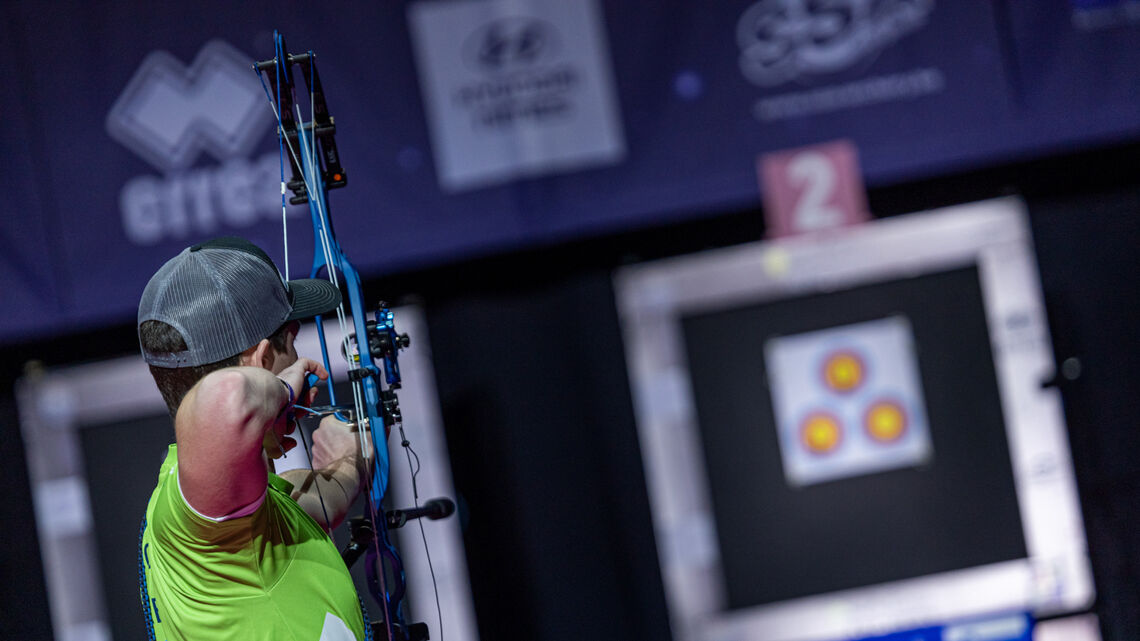
Heading into autumn and the end of the outdoor shooting season, many of us are heading indoors for 18 metres. It’s typically a good first few weeks as all that time spent at the longer distances has served you, and your technique, well for the shorter range.
After the enthusiasm of the first few training sessions, though, things often get complicated.
Dipping results, frustrating groups – weird arrows on a specific target spot – or feeling like progress has slowed while stuck inside, all signs that your technique needs a little maintenance. That’s all.
Here are three things you should focus on as you transition to 18 metres…
1. Shoulder strength
Many people shooting indoors use targets with multiple targets – like vertical or triangular triple spots. The distances between them might be minimal, but understanding that even the minutest of movements can affect where your arrow lands is critical.
It’s something we don’t have to contend with outdoors, where archers shoot a single target.
A strong front shoulder position is crucial when shooting indoors. The shoulder joint offers a huge range of movement, and it’s very important that you don’t utilise this to aim at different spots, instead moving from your core to keep the upper body frame solid and consistent.
Train this by using conscious aiming exercises, like putting aiming points all over target foam, drawing up and moving from one to the other before letting down. Or by pinning your vertical triple spot horizontally, or diagonally, and training at ever stranger angles than you’d ever face in competition.
Off-centre groups on a particular spot or a feeling of collapse can be symptoms that things aren’t quite right up front.
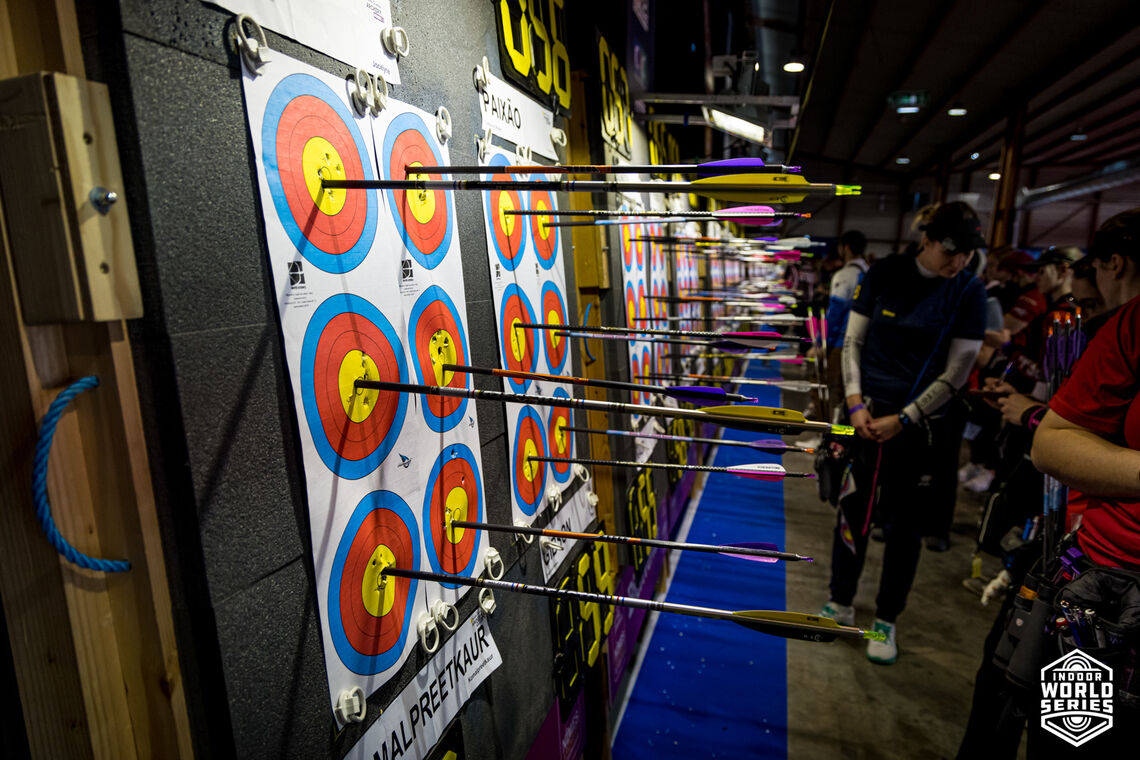
2. Sight trajectory
The movement from target spot to target spot, and the changing positions of your body, also affect your aim. Use both the horizontal and vertical parts of your sight, or a bubble with a compound, to make sure you’re level.
Even a recurve archer that’s transitioning their aiming frame – the top shoulders – correctly might be affecting the arrow flight or aiming process in a way that’s causing one of the three targets in a triple spot to group off-centre. In practice, you want to fix it. In competition, perhaps it is better to understand it – and aim off?
3. Balance
Shooting at such a relatively short distance – 18 metres compared to 50 or 70 outdoors – can make the space feel small, like you don’t have much arrow flight to work with, and like you can get away with lapses in technique, particularly a messy release.
But this shorter distance can actually prove more critical, especially if your bow isn’t perfectly tuned. With less time to straighten up in flight, ripped releases with a recurve or torque in the compound handle can cause arrows to effectively fly sideways, and on such small target faces, the errors end up being critical.
Archery is all about balance. Push in a straight line towards and away from the target, keep everything calm and centred, and you’ll avoid the frustrating fliers.
Above all, never forget that the stability of your aim is a direct consequence of the stability of your body position. Good training!
Marc Dellenbach is head coach at the World Archery Excellence Centre in Lausanne.

